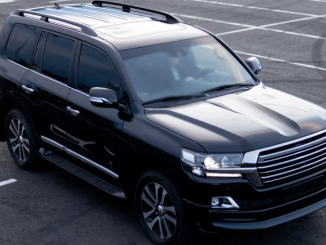Have you ever looked at a flight path on a map and wondered why airplanes take curved routes instead of flying in a straight line? Wouldn’t flying in a direct line be more fuel-efficient and faster? At first glance, it seems logical that a shorter distance would result in less fuel consumption, but in reality, aviation is far more complex.
Several factors determine flight paths, including the Earth’s shape, jet streams, weather conditions, and air traffic regulations. Let’s break down why airplanes rarely fly in a straight line and how their curved paths actually make flights more efficient.
The Earth’s Shape and the Great Circle Route

One of the biggest reasons airplanes don’t fly in a straight line is the Earth’s curvature. While we often view flight maps as flat, the Earth is a sphere, and the shortest path between two points is actually an arc called the Great Circle Route.
If you take a globe and use a string to connect two distant locations, you’ll notice that the shortest route often curves rather than follows a straight path. This is why flights from New York to Tokyo pass over the Arctic region rather than flying directly west across the Pacific Ocean.
Using the Great Circle Route helps planes save both time and fuel, even though it appears curved on a flat map.
Jet Streams and Weather Conditions Impact Flight Paths
Another key factor affecting airplane routes is jet streams—high-altitude wind currents that move at speeds of up to 200 mph (320 km/h). Pilots strategically plan routes to take advantage of these strong winds when possible.
Video : Why Airplanes Don’t Fly Straight
Flying with jet streams allows an airplane to get an extra push, helping it move faster while burning less fuel. Flying against a jet stream can slow down the plane significantly, increasing fuel consumption. Pilots often adjust routes to avoid strong headwinds, even if it means flying a longer distance.
Additionally, storms, turbulence, and severe weather conditions also play a role in determining flight paths. Airplanes may adjust mid-flight to bypass dangerous weather zones, thunderstorms, or areas with extreme turbulence.
Air Traffic Control and Flight Regulations
Air traffic isn’t a free-for-all where planes can just fly wherever they want. There are strict regulations set by aviation authorities and air traffic control (ATC) that dictate flight routes.
Some of these rules include restricted airspace, where certain areas, such as military zones, national security locations, and political zones, prohibit commercial flights from entering. Predefined flight corridors exist to avoid mid-air collisions, ensuring flights follow established air traffic lanes. Major airports handle hundreds of flights daily, so ATC ensures safe and efficient arrivals and departures.
Due to these regulations, airplanes cannot always take the most direct path and must follow designated routes instead.
Avoiding Air Turbulence for Passenger Comfort
Turbulence can make a flight uncomfortable, and pilots actively adjust routes to minimize rough air conditions. There are different types of turbulence, including thermal turbulence caused by warm air rising from the ground. Flying at higher altitudes helps avoid this.

Mechanical turbulence happens near mountains and rough terrains where wind patterns shift unpredictably. Clear-Air Turbulence (CAT) is sudden, strong air currents in high altitudes that are difficult to predict.
To ensure a smoother ride for passengers, pilots may deviate from the shortest path to avoid these turbulent areas.
Why Do Airplanes Sometimes Ascend Before Landing?
If you’ve ever been on a flight where the plane suddenly climbs just before landing, you might have felt a bit concerned. This maneuver is known as a go-around and is actually a common and safe aviation practice.
Some reasons why pilots perform a go-around include runway clearance issues. If another plane hasn’t cleared the runway in time, pilots must abort the landing and circle back. Poor weather conditions, such as poor visibility, strong crosswinds, or sudden gusts, can make a landing unsafe. If a plane is too fast, too high, or not properly aligned with the runway, the pilot will ascend and try again for a safer landing.
Go-arounds are standard procedures in aviation and ensure passenger safety above all else.
The World’s Longest Non-Stop Flight
While most flights follow curved paths, some routes push the limits of non-stop travel. The longest direct commercial flight in the world is from Singapore to Newark, New Jersey, USA.
This flight covers a distance of 10,400 miles (16,700 km) and takes approximately 18 hours and 45 minutes. It follows a carefully optimized path to balance fuel efficiency, wind conditions, and passenger comfort.
Video : Does Earth’s Rotation affect the Airplanes Speed & Flight Time
What Happens If a Plane Suddenly Loses Cabin Pressure?
A sudden drop in cabin pressure is often portrayed as a dramatic event in movies, but in reality, pilots are well-trained to handle it calmly.
When this happens, oxygen masks automatically deploy, and passengers should put them on immediately and breathe normally. The plane will descend to a safe altitude where oxygen levels are sufficient for breathing. The flight crew will assess the situation and communicate with passengers.
Losing cabin pressure doesn’t mean the plane will crash—pilots follow strict safety protocols to handle such incidents efficiently.
Final Thoughts: Why Curved Flight Paths Are More Efficient
While it may seem counterintuitive, airplanes take curved routes instead of straight lines to optimize flight efficiency, fuel usage, and passenger safety. Factors such as the Earth’s shape, jet streams, air traffic control, and weather conditions all play a crucial role in determining flight paths.
So next time you’re on a plane and see the route map displaying a curved flight path, remember there’s a lot of science and planning behind it to ensure you reach your destination as safely and efficiently as possible.
Liam Payne: Former One Direction star dies in Argentina
Tributes have been pouring in for the 31-year-old singer who fell from a third-floor balcony at a hotel in the capital Buenos Aires.
Former One Direction star Liam Payne has died after falling from a hotel balcony in Argentina.
The 31-year-old singer suffered “extremely serious injuries” after falling from the third floor at the hotel in the capital Buenos Aires, police said.
Alberto Crescenti, head of the state emergency medical system, said on Argentinian television that Payne, who had a seven-year-old son with former Girls Aloud singer Cheryl, fell into a courtyard of the CasaSur Hotel in the city’s Palermo neighbourhood.
The official declined to answer questions about how he came to fall from the balcony.
Mr Crescenti said authorities were investigating the circumstances of his death and conducting a post-mortem.

https://imasdk.googleapis.com/js/core/bridge3.673.0_en.html#goog_1364029489Play Video – Liam Payne dies: Sky’s Martha Kelner reportsLiam Payne dies: Sky’s Martha Kelner reports

Meanwhile, a transcript has been released of the emergency call the hotel desk manager made to 911 after the fall.
The hotel manager is heard saying he has a “guest drunk with drugs and alcohol”, adding: “He is breaking everything in the room.”
He later tells the operator they “need to send someone with urgency because I don’t know if the guest’s life is in danger because he is in a room with a balcony”.
The hotel manager continues: “We are afraid he could do something that threatens life.”
The 911 operator says the police and emergency medical workers have been sent to the scene.
Argentinian media reported that Payne was in Buenos Aires to attend the concert of his former One Direction bandmate Niall Horan earlier this month.
Fans flocked to the hotel after news of Payne’s death broke, with many expressing shock and heartbreak.
One Direction fans from across the world have also been sharing poignant tributes to Payne on social media.
 0:21
0:21
https://imasdk.googleapis.com/js/core/bridge3.673.0_en.html#goog_735978003Play Video – Fans hold a vigil for Liam Payne outside hotelFans hold a vigil for Liam Payne outside hotel

In the hours before his death, photos shared from the singer’s Snapchat account showed him with his partner Kate Cassidy.
There was also clips, including one where he said it was a “lovely day here in Argentina”.
It appears the videos were filmed earlier in the week and then posted in his final hours.
“Just enjoying coffee and breakfast, even though it’s like 1pm,” he said. “Literally sleep in every day until like 12. We’re such losers.”

The star spoke about “going to ride some horses” and said: “Think I’m going to play polo again which is going to put me out of action for about six weeks.”
“It’s going to be a nice day,” he added.
Payne had embarked on a solo career after One Direction announced they were going on an indefinite hiatus in 2015.


The band was formed on The X Factor in 2010, with Payne featuring alongside Horan, Zayn Malik, Louis Tomlinson, and Harry Styles. They were mentored by Simon Cowell who had also created the show.
The group finished third before signing with Cowell’s “Syco” record label and going on to become one of the best-selling boybands of all time.
Payne’s relationship with Cheryl, who was a judge on the X Factor, began in 2016 and ended in 2018. They named their son Bear.
Britain’s Got Talent, another show created by Cowell, has cancelled its auditions in Blackpool today in light of Payne’s death.


It comes as tributes from the entertainment industry have been pouring in for Payne since news of the tragedy emerged.
In a post from its official X account, the team at the X Factor wrote: “We are heartbroken by the sad passing of Liam Payne.
“He was immensely talented and, as part of One Direction, Liam will leave a lasting legacy on the music industry and fans around the world.”
Separately, Dermot O’Leary, a former host of the show, posted a photo of himself and Payne on Instagram, writing: “The worst news. I remember him as a 14-year-old turning up to audition on The X Factor, and blowing us away singing Sinatra. He just loved to sing.”

TV presenter Rylan Clark, a former X Factor contestant, said: “Extremely sad news. (Very) tragic and so young. RIP Liam.”
Oasis frontman Liam Gallagher, Hip hop icon Flavor Flav, boxer Chris Eubank Jr and former Cultural Club singer Boy George are also among those who have paid tribute.
Prime Minister Sir Keir Starmer has also offered his condolences, with his official spokesman saying: “The Prime Minister’s sincere condolences are with Liam’s family and friends at this time.
“One Direction were one of the biggest bands in history and their music had a huge impact on many millions of fans around the world.”
 0:40
0:40
https://imasdk.googleapis.com/js/core/bridge3.673.0_en.html#goog_1746462811Play Video – Liam Payne’s X Factor auditionLiam Payne’s X Factor audition
Payne, who was born in Wolverhampton, had a complicated personal life and spoken openly about his struggles with alcoholism and mental health. He was also diagnosed with ADHD as an adult.
He had previously spoken about suffering with suicidal thoughts, admitting that he was “lucky to still be here”.
In 2019, Payne addressed his mental health on Sky show Straight Talking with Ant Middleton, where he spoke about his struggles with fame.
Describing fame as like “having a weird midlife crisis”, Payne said: “For some certain circumstances, I’m quite lucky to be here still.”
Since October 2022, Payne has been linked to influencer Cassidy, recently posting on Instagram that they “make each other better people”, and adding: “For the first time in my life I’m happy to be me and that’s priceless.”
He was previously engaged to Maya Henry, with their relationship ending in 2022.
Earlier this week, it was reported she had issued legal proceedings – instructing lawyers to issue a cease and desist letter to Payne – and she posted a video on TikTok claiming the singer had been repeatedly sending her unwanted messages.
Last week, the Sun reported Payne had parted with his management company and shelved plans for a second solo album.



Leave a Reply